#binker & moses
Text
My best of 2022 list is now up at Milner on Music
6 notes
·
View notes
Audio
Village of the Sun - First Light - Binker and Moses team up with Simon Ratcliffe of Basement Jaxx for a spiritual jazz LP (Gearbox Records)
Village Of The Sun is an enigmatic collaboration between UK jazz virtuosos Binker Golding & Moses Boyd and electronic music legend Simon Ratcliffe of Basement Jaxx fame.
Born out of a shared passion for improvised instrumental music, the new project sees all three of the artists steps into relatively new territory, combining their respective sensibilities to create something all at once atmospheric and danceable.
All tracks written by Simon Ratcliffe, Binker Golding and Moses Boyd
Apart from ‘Ted' - written by Ted Moses, Simon Ratcliffe, Binker Golding and Moses Boyd
Binker Golding: tenor saxophone
Moses Boyd: drums
Produced and Mixed by Simon Ratcliffe and all other instrumentation by Simon Ratcliffe
#Village of the Sun#binker and moses#binker golding#moses boyd#simon ratcliffe#basement jaxx#2022#gearbox records#jazz#spiritual jazz#uk
10 notes
·
View notes
Audio
BINKER & MOSES - The Death of Light
Alb. "Alive in the East?" (2018)
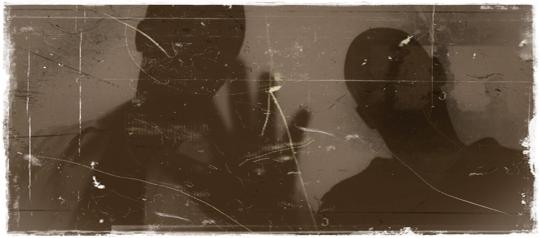
Binker Golding - tenor saxophone
Moses Boyd - drums
Featuring:
Yussef Dayes - drums
Tori Handsley - harp
Evan Parker - tenor saxophone, soprano saxophone
Byron Wallen - trumpet
#Binker & Moses#Binker Golding#Moses Boyd#Tori Handsley#Evan Parker#Byron Wallen#Yussef Dayes#British Jazz
15 notes
·
View notes
Text
32 (Technically 36) Albums We Loved That Happened To Come Out in 2022

Cake image courtesy of Oren Ambarchi’s Shebang album art
As more music is being released than ever, it can be hard to pick out trends or even commonalities among our favorites. A post-pandemic world that saw a more full-fledged return to live music and in-person collaboration certainly influenced the records released last year, but from our eyes and ears, it was the artists that ignored physical boundaries, not taking for granted their ability to create, that put out the albums that moved us most. From “solo” records that were truly synergic to songs that work towards toppling the powers that be, innovative producers to stalwarts of indie rock, here are 32 (technically 36) albums that came out last year that we truly loved.

700 Bliss - Nothing To Declare (Hyperdub) / Moor Mother - Jazz Codes (Anti-)
Prolific poet and musician Camae Ayewa, who records as Moor Mother, released two more albums in 2022 that explored genres new and old. On Nothing To Declare, the debut LP from 700 Bliss, her project with DJ Haram, the two make a formidable team. Haram combines clattering beats with Moor Mother’s forceful delivery and incomparable flow, as the duo traverse techno, noise, and sound collage worlds. You’ve never heard Moor Mother in front of instrumentals like this, spitting words that are equal parts deftly serious and humorous. She pays tribute to choreographer and anthropologist Katherine Dunham on “Anthology”, declaring that Dunham “danced America on stage” over DJ Haram’s hard techno beat, a melding of tenets of Black music. On “Candace Parker”, which features breakbeats from Palestinian producer Muqata’a, Moor Mother laments, “They rape our mothers while y’all just record.” There’s an urgency to Nothing to Declare, manifested in Special Interest’s Alli Logout screaming, “I’m a motherfucking agitator!” on “Capitol” and Moor Mother’s cinematic lines about guerilla warfare against billionaires and imperialist overloads on the trap-inflected “Discipline”. Yet, even 700 Bliss know that they can be tongue-in-cheek, hilariously on interlude “Easyjet”, a facetious conversation featuring two people making fun of Moor Mother’s vocal tendencies and DJ Haram’s penchant for percussive chaos. It’s a welcome break on an album whose main question appears in the final track: “How much more can we take?”
Jazz Codes is Moor Mother’s second solo album for Anti-, a companion piece to last year’s great Black Encyclopedia of the Air. Like Nothing to Declare, it’s chock full of collaborators, but this time, Moor Mother plays the role of ethnomusicologist, juxtaposing rap, singing, and scholarly spoken word interludes to explore the history of jazz and its descendants. “Dance through the trials of my father,” Moor Mother raps on opener “UMZANSI”, where Mary Lattimore’s harp trickles below horns and footwork-esque drums. Interpolating free jazz and quiet storm R&B and referencing boom bap and juke, Jazz Codes, like the genre it’s named after, reveals new truths after every listen. Moor Mother’s “MEDITATION RAG” is somewhat of a mission statement, her wish to embed herself in “Sun Ra halo, CHAI Congo, Mississippi to East Texas,” in efforts to reclaim the Black music referenced on both this album and Nothing to Declare. Fatboi Sharif groans, “You took the blues away from me” on “BLUES AWAY”; the album’s thematic climax, “THOMAS STANLEY JAZZCODES OUTRO”, places the academic Stanley over an instrumental from Irreversible Entanglements. Jazz should become code for sex again, he posits, rendering something that was once abstract to be again physical and tangible. - Jordan Mainzer
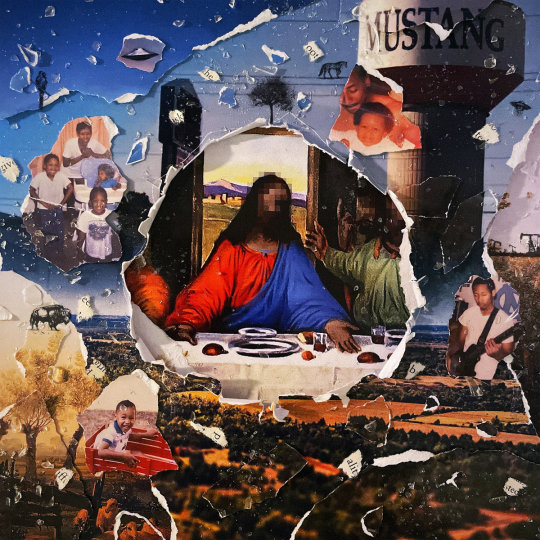
Bartees Strange - Farm to Table (4AD)
Bartees Strange has had an exciting few years, and Farm to Table, the follow up to his excellent debut, only adds to the thrill of his ascent. Strange bends indie rock to fit the album’s vision, from the bright horns on “Heavy Heart” to the electronic flourishes of “Cosigns” and “Wretched” and even the mingling of home audio clips and the gentle fingerpicked guitar of “Black Gold”. Lyrically, the album wrestles with duality: of celebration and grief, home and touring, the comfort of family and the unknown of charting your own path. Strange takes what worked so well on Live Forever and digs deeper, continuing to show off his ability to world-build, which really is all you could want from an innovative artist. - Lauren Lederman

Beyoncé - Renaissance (Parkwood Entertainment/Columbia)
“Renaissance, purportedly the first installment of a trilogy of albums, celebrates Black and LGBTQ+ music and the judgement-free zones they honor. Representative of Beyoncé’s state of mind during the pandemic, it exemplifies her self-love and desire to break free in a time of isolation. And of course, it’s full of braggadocio and skill with the research and credentials to back it up.”
Read the rest of our review here.

Binker & Moses - Feeding the Machine (Gearbox)
“For their new album Feeding the Machine, the saxophone and drums duo of Binker Golding and Moses Boyd brought their live partner to the studio to add tape loops and electronics to the ingredient list. The result is a major sonic shift, feeding their improvisations through machines, Luthert’s modular synthesis reordering acoustic tracks and drums in a way that’s so distorted it doesn’t even sound acoustic. From the opening moments of ‘Asynchronous Intervals', though you recognize Golding’s saxophone, echoing loops clue you into the sea change. This is different, and it’s here to stay.”
Read the rest of our review here.
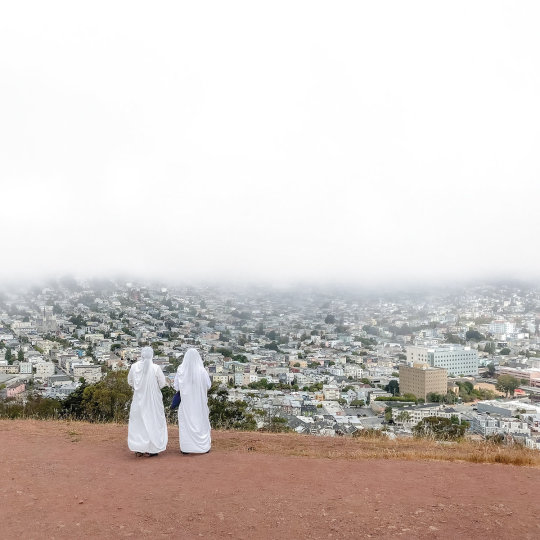
Death Cab For Cutie - Asphalt Meadows (Atlantic)
It’s not that I had given up on Death Cab for Cutie. The stalwart indie rock band has been cranking out albums for years, but what was it about Asphalt Meadows that struck me more than their other recent releases? A five-minute, mostly spoken word track. “Foxglove Through the Clearcut” gives us the contemplative lyrics we come to expect from Benjamin Gibbard but packaged in a way that serves the slowly unfolding story until it reaches its guitar solo crescendo. And I realize that this is the element that’s drawn me back fully into Death Cab’s orbit. The album feels a little rougher around the edges, the guitar fuzzier in moments, not afraid to get a little sharp, which feels apt after the last few years. Asphalt Meadows captures a reflection of our recent post-lockdown history and the urgency of trying to make sense of where we go next. “Now it seems more than ever there’s no hands on lever,” Gibbard sings, a fitting statement on an album that isn’t afraid to dive into the unknown of our current moment. - LL

Florist - Florist (Double Double Whammy)
“The idea of a person who has faced heartbreak or grief retreating to solitude to create art is oft-romanticized, perhaps to a fault. Emily Sprague has certainly created masterful albums by herself, whether the ambient music released under her own name or Emily Alone, a solo album released under the Florist moniker following her mother’s death and a move out west. But in June 2019, Sprague moved back to New York and rented a house in the Hudson Valley with the band’s original lineup: Jonnie Baker, Rick Spataro, and Felix Walworth. They’d spontaneously record their instruments beside their surrounding natural woods during a hot and rainy summer, the first time they’d ever recorded this way, for this long. The result is Florist’s latest self-titled record, a reinvention of sorts, and one that perhaps shows Sprague and the music listening public that great art can come out of reflecting on troubling times with a loving community by your side, too.”
Read the rest of our review here.

Immanuel Wilkins - The 7th Hand (Blue Note)
“Wilkins’ lack of fear in not just challenging the listener but purposefully bypassing their understanding is what makes The 7th Hand a monumental album. His debut Omega was just as socially conscious, a record about the Black experience in America. But The 7th Hand breaks the rules while establishing some of its own. The first track, 'Emanation', ends in the middle of a vamp. Each track from then on out relates to the next by a triple meter, going down and then back up until the free 'Lift'; if, in Biblical terms, 6 represents man and human weakness, 7 represents divine intervention, a concept represented at first by an instrument and later by the freedom of the album’s final track.”
Read the rest of our review here.

Jeremiah Chiu & Marta Sofia Honer - Recordings from the Åland Islands (International Anthem)
“Independent of its context, the album is a pleasure to listen to, one that allows you to create your own associations with the sounds. Warbling synth harmonics, birdsong, and crunchy noises like a train in the rain pervade opener ‘In Åland Air’ (which features processing from Tortoise’s John McEntire). ‘On the Other Sea’ is reminiscent of Boards of Canada’s penchant for finding eerie atonality in otherwise beatific timbres, with its wind chimes, synths, and horns. ‘Rocky Passage’ creaks along, full of noises like hearing a woodpecker on a hike, unable to spot the bird cascading up and down its tree. The synth arpeggios on ‘By Foot By Sea’ sound, of course, like the up-and-down current of waves. But I find the album even more rewarding when you do know the stories behind the songs, the way the instruments try to emulate nature. Honer’s viola leads my favorite, ‘Snåcko’, a track named for the island next to Kumlinge, as keys circle in the background, purportedly inspired by the feeling of your eyes slowly adjusting to multi-colored moss in the forest of the island.”
Read “Press Record”, out interview with Chiu and Honer.

Kevin Morby - This Is A Photograph (Dead Oceans)
“The last few years have given us a sense of perspective, perhaps even urgency when faced with the prospect of our own mortality. Yeah, it happens when you’re surrounded, whether in person or even just on the news, with so much death. For Kevin Morby, the illumination happened before the pandemic. His father collapsed at the dinner table and had to be rushed to the hospital in early 2020. Though his dad ended up okay, that night, in order to distract himself from worrying, he flipped through old family photos. He found a picture of his father, carefree and shirtless, sitting in the front yard. But it wasn’t just a photograph: It was a moment, captured, a document of hopes, moods, dreams, and fears at a point in time. Morby decided to travel to Memphis and chase some more ghosts. What resulted from that decision is This Is a Photograph, his best album yet.”
Read the rest of our review here.

Lucrecia Dalt - ¡Ay! (RVNG Intl.)
Following incredible albums like 2018′s Anticlines and 2020′s No era sólida, Berlin-based experimental musician Lucrecia Dalt released her most thematically ambitious album to date with ¡Ay!, but you wouldn’t even know it. Recalling growing up in Colombia and, generally, the music of the Latin American diaspora, ¡Ay! is also a vague sci-fi story about an alien named Preta visiting Earth and trying to figure out humanity. Cleverly, as much as Dalt sings from Preta’s perspective, she puts us in the shoes of those traversing the unknown, and we spend most of the album simply marveling at the sounds entering our ears. Beautiful and strange, opener “No tiempo” features wind instruments in lockstep with percussion and Dalt’s singing. Lina Allemano’s muted trumpet Mickey Mouses with Edith Steyer’s clarinet on “La desmesura”. “Atemporal” sports warped, circus-like drums and horns. Independent of the album’s aims and context, ¡Ay! is an undoubtedly playful expression of Dalt’s musical language. She whispers, “No obedezco a tu verdad lineal” on “El Galatzó”, winking alongside Isabel Rößler‘s double bass, flute, synthesizers, and wooden stick bongos; “I don’t obey your linear truth,” goes the line in English, like if the aliens from Arrival learned how to play bolero. - JM
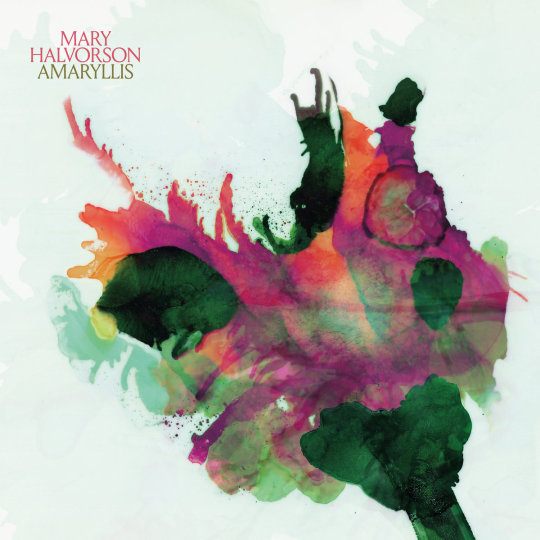
Mary Halvorson - Amaryllis / Belladonna (Nonesuch)
In May, jazz composer and guitarist (and MacArthur Grant winner) Mary Halvorson released two albums that couldn’t sound more different, yet have tying threads in personnel and spirit. The first, Amaryllis, is a six-song suite for the largest ensemble for which Halvorson has ever written. Produced by Deerhoof’s John Dieterich, it features Patricia Brennan (vibraphone), Nick Dunston (bass), Tomas Fujiwara (drums), Jacob Garchik (trombone), and Adam O’Farrill (trumpet), as well as The Mivos String Quartet on three of the songs. “Night Shift” is slinky and sneaky, Halvorson’s arpeggiated guitar bubbling beneath a bed of bass, drum, vibes, and horns, Brennan and O’Farrill taking the song out with solos. Her and Dunston’s lines tangle with the horn section on the title track, propelled by Fujiwara’s forward-marching drums and melodies and countermelodies. The Mivos Quartet introduces “Side Effect” with string harmonics, previewing Brennan’s kickstarting vibraphones that send the band into a swaying, funky jam. Equally impressive are the songs that are groove-less and strange either partially or for their entirety, like the woozy “Anesthesia” and the squeaking, atonal “Hoodwink”.
It’s those experimental tunes that mirror Belladonna, five compositions written for Halvorson and the Mivos Quartet, representing another first for Halvorson: her first music written for a string quartet. Her parts improvised, the music is abstract and expansive, filled with contrast. On “Nodding Yellow”, the pulses of Halvorson’s electric guitar represent a stark difference with the lushness and pluckiness of the strings. She creates worlds of sound on “Moonburn” and “Flying Song”, with the expressive, upward bends of her chords. And on the stunning, 10-minute “Haunted Head”, the string parts take their turn one by one, washing over each other with varying degrees of dissonance and fluttering flourishes. A microcosm for both albums, the players are given space to take their own journey, but in tandem. - JM
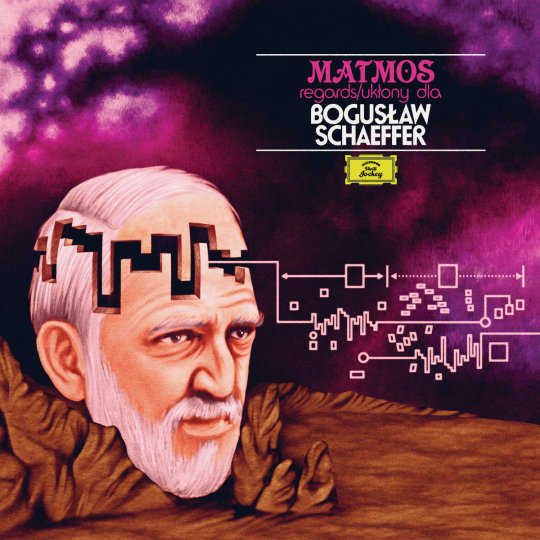
Matmos - Regards/Ukłony dla Bogusław Schaeffer / The Soft Pink Truth - Is It Going To Get Any Deeper Than This? (Thrill Jockey)
You can always count on Drew Daniel to be adventurous. Making an album constructed from washing machine noises? Check. Asking 99 musicians to contribute to an album with anything they wanted, but it had to be at 99 bmp? You bet. Making dance covers of black metal songs? Absolutely. This year, two albums he released, one with Matmos and one his ever-burgeoning solo project The Soft Pink Truth, were again based on very specific concepts, toeing the line between asking abstract, academic questions and answering them with twisted good times. For Regards/Ukłony dla Bogusław Schaeffer, Matmos were given access to the entire catalog of the Polish electronic artist after whom the album was named, encouraged to do whatever they wanted with it. With some trusted collaborators in hand, they bent the existing material into something entirely new, anti-ASMR anthems for the avant garde. Rubbery vocals, drippy synths, honking horns, and mousy strings allude to the work Schaeffer did for orchestras as much as his own strange worlds. Yet, Matmos don’t want us to listen for clues. “If All Things Were Turned to Smoke / Gdyby wszystko stało się dymem” takes harp and musique concrète from Schaeffer’s 1970 composition “Heraklitiana”. As electronics from Horse Lords’ Max Eilbacher and harp from Úna Monaghan layer on top of the source material, our desire to pick apart where the text ends and the composition begins leaps out the window.
The Soft Pink Truth’s Is It Going To Get Any Deeper Than This? attempts to answer a much more obtuse question that was once posed by a woman at a club to one of Daniel’s DJ friends, and does so through the peaks and valleys of compositions and musical expressions of queer sexuality. The poolside funk of “Deeper” leads into the chirpy goth club music of “La Joie Devant La Mort”, Xiu Xiu’s Jamie Stewart building off of a sentence in French by philosopher and erotica author Georges Bataille. The song, and the album in general, is fun because of, not in spite of, how unabashedly dramatic it is. Wye Oak and Flock of Dimes’ Jenn Wasner gets her diva moment on “Wanna Know”, cooing, “I just really wanna know / Is it going to get any deeper than this?” over an earworm house instrumental. Nate Wooley’s muted trumpet buoys “Moodswing”, which opens with a champagne cork pop and later falls into broken glass. It’s a reminder that with every celebration comes the potential for shards, a reminder to live fully in the moment, to go deeper when you can. - JM

MUNA - MUNA (Saddest Factory)
MUNA has always had an uncanny ability to spur deep emotions in the compact form of a pop song, and their self-titled third release only gives them more room to expand their sound. Part of the band’s power comes from their celebration of queer joy and love, to unabashedly be themselves. If it’s heartbreak, they embrace it with a welcoming sincerity. A crush is giddy and unapologetic. “There’s nothing wrong with what I want,” vocalist Katie Gavin asserts. Their broader sound brings the band to new heights. The glitchy vocals of “Runner’s High” make the break-up song feel jagged in the way it feels to be dancing under a strobe light. The country-tinged pop of “Kind of Girl'' adds a soaring optimism to finding yourself. They’re the band that can get Phoebe Bridgers to embrace her pop side on the sparkling, joy-filled ode that’s “Silk Chiffon”. - LL

Nilufer Yanya - PAINLESS (ATO)
“Until you fall, it’s painless,” sings Nilufer Yanya on “shameless”, and it’s a through-line you can find over and over again on PAINLESS. Yanya explores different dimensions of heartbreak on the album, and each song unfolds into its own sonic world. “L/R”’s marching drum beat pairs perfectly with the almost staccato delivery of her lyrics as she rearranges sentence structure, which then evolves into the more intimate lush vocal of “Shameless”. The album is filled with moments like these, and Yanya perfectly constructs an album where each song offers something engaging and unexpected. - LL

Nina Nastasia - Riderless Horse (Temporary Residence)
“Riderless Horse was produced by Nastasia, Steve Albini, and Greg Norman, recorded at a house in upstate New York. By the end, you realize it’s an empowering album for Nastasia; as much as she feels ‘sadness and guilt’ the process of writing and recording an acoustic album that features only her showed her how powerful she could be on her own.”
Read our preview of Nina Nastasia’s opening set for Mogwai at Metro.

NNAMDÏ - Please Have A Seat (Secretly Canadian)
The thrill of a NNAMDÏ album is that you never know what you’re going to get, but you know it’s going to work. A polymath and Chicago music scene hero, NNAMDÏ’s latest album shows an artist who’s consistently upping his game. Constantly surprising, NNAMDÏi’s skill as a musician and lyricist means you know he’ll pull off any left-field flourish: intricate math rock guitar, gentle falsetto, frenetic percussion, and even the untamed instrumentals he explored on his album KRAZY KARL all appear here. Fans know this, and Please Have a Seat is a perfect introduction to any newcomers. Pull up a seat, get to know the album, and you’ll find yourself also asking: What can’t Nnamdi do? - LL
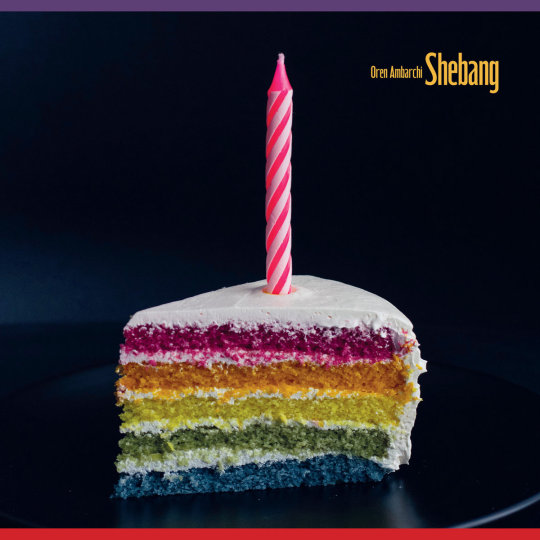
Oren Ambarchi, Johan Berthling, & Andreas Werliin - Ghosted / Oren Ambarchi - Shebang (Drag City)
Prolific guitarist Oren Ambarchi released two records this year, one with bassist Johan Berthling and drummer Andreas Werliin, and a solo record. Ghosted, as we wrote when interviewing the trio earlier this year, is “comprised of four numerically titled tracks that build in different ways. ‘I’ sports a Latin groove, shaky percussion, and spindly bass, Ambarchi’s guitar adopting organ-like tones. ‘II’ is lighter in timbre and more spacious and minimal, its circular rhythms increasing in volume instead of in groove. ‘III’ is the longest track on the album at over 15 minutes, a mélange of sprawling guitar drone textures. And ‘IV’ is a spritely, to-the-point slow-paced jazz tune, with melancholy swirls of guitar and deep bass.”
Shebang, Ambarchi’s solo record, features contributions from Berthling as well as Chris Abrahams, BJ Cole, Sam Dunscombe, Jim O'Rourke, Julia Reidy, and Joe Talia. Like Quixotism and Hubris, it’s a single piece divided into movements, each person recording individually as Ambarchi fit their contributions together like a puzzle, giving each player a time to shine. Though Ambarchi himself introduces the piece with gorgeous, sparkly picking, he eventually gives way to the other constant throughout, Talia’s drumming. Making space for, in order, Dunscombe’s bass clarinet, Cole’s off-kilter pedal steel, Abrahams’ inimitable piano, Berthling’s steady upright bass, Reidy’s ping-ponging 12-string guitar, and O’Rourke’s sharp modular synths, Ambarchi’s always beneath the surface. Whether contrasting Cole’s textures with rubbery synths or Abrahams’ propulsive notes with synaptic blasts, Ambarchi reminds us of the celebratory nature of collaboration, even when you’re not in the same room. - JM

Prince & The Revolution - Prince & The Revolution: Live (Remastered) (Legacy)
“Syracuse, New York, March 30th, 1985. Jim Boeheim would go on to coach many great Syracuse Orange men’s basketball teams in the Carrier Dome, but the best thing to ever appear there was on that night. Mere months after releasing Purple Rain, Prince decided to cut that album’s tour short so he could keep working on material. (If you’ve ever heard Sign O’ the Times, you know it was the right decision, not to mention Around the World in a Day and Parade.) But what a swan song he and The Revolution gave the Purple Rain tour. The remastered version of Prince & The Revolution: Live, released last month, shows the perfected live show of one of the greatest albums of all time.”
Read the rest of our review here.
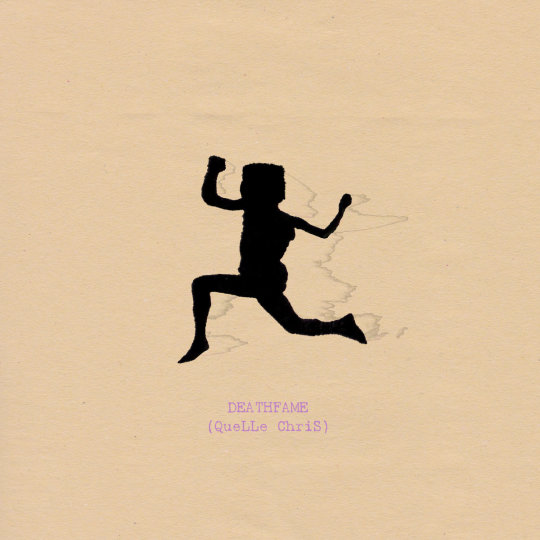
Quelle Chris - DEATHFAME (Mello Music Group)
On the surface, if albums like Everything’s Fine and Guns put Detroit rapper Quelle Chris on the map, DEATHFAME seems more casually great. That’s because it’s also his most reflective, one that considers his place with in the rap game and the pros and cons of success. Throughout the record, he mourns the music industry’s exploitative tendency to capitalize on rappers’ talents after they’ve passed away. “You can keep your feast and wine / I just want my peace of mind,” he raps on the soulful and slow “Alive Ain’t Always Living”. The atonal production mirrors Chris’ unease and mixed feelings towards a career in rap as he grows older, like the music box creepiness of the title track and the metallic drums and synth loops of “Excuse My Back”. Because Chris’ delivery is laid back and his words verbose, he’s often pigeonholed with conscious rap, something he addresses on highlight “King In Black”: “Listing me next to these Yo Gabba Gabba emcess / And these old stone age-ass ‘yabba-dabba’ emcees.” (Funny enough, with his different vocal inflections, Chris reminds me of the late, great MF Doom multiple times throughout DEATHFAME, an ironic twist considering the album’s main concerns.) Still, from his words of wisdom on “So Tired You Can’t Stop Dreaming” (“If heaven’s got a ghetto, hell’s got a resort”) to his remarkable vocal about-face on depressive piano ballad “How Could You Love Something Like Me?”, Chris proves once again that with his versatility and talent, he very well shouldn’t be taken for granted while he’s still here to bless us with his rhymes. - JM
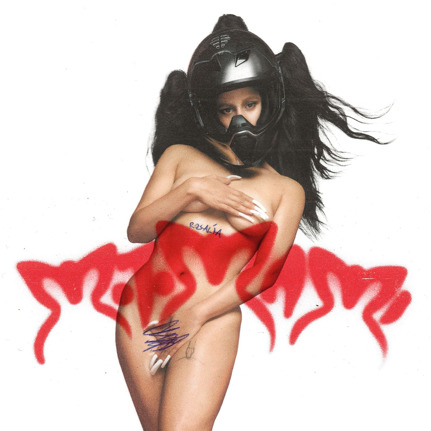
Rosalia - MOTOMAMI (Columbia)
“‘La ambición, delirio de grandez’ sings Rosalía on a cover of Justo Betancourt’s ‘Delirio de Grandeza”’ from her incredible third album MOTOMAMI. Meaning ‘Ambition, delusions of grandeur”’ in English, the phrase is appropriate for a song on an album full of similarly wild ones. To Rosalía, delusions of grandeur and ambition are one in the same, all part of a constantly transformational aesthetic. The Spanish folkloric singer-songwriter turned pop star, a woman who has been charged with appropriating Romani culture with her remixed flamenco, has actually done her research and then some. On MOTOMAMI, she fully delves into a further cultural melting pot. Jazz rubs elbows with reggaetón. Bachata, propulsive champeta, and dembow songs are triple decker sandwiched between Burial-sampling electronica, piano ballads, and deconstructed club music. When she throws in a sample of ‘Delirious’ by Vistoso Bosses and Soulja Boy at the end of ‘DELIRIO DE GRANDEZA’, you can’t imagine the original tune without it.”
Read the rest of our review here.
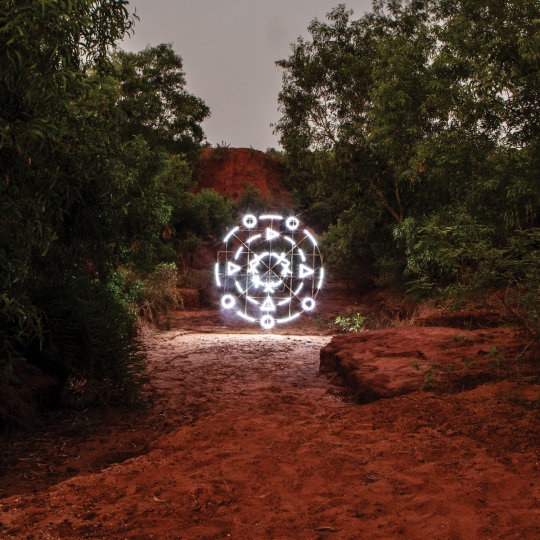
Sarathy Korwar - Kalak (The Leaf Label)
London-based drummer, composer, and producer Sarathy Korwar, the mind behind such inspired jazz fusion records like Day To Day and More Arriving, has released his self-described Indo-futurist manifesto, and perhaps his magnum opus. Based on a rhythm and symbol he projected on the walls during recording that was the basis for improvisation, Kalak is a percussive, circular album that puts you in a trance. With often-wordless vocals, rhythmic woodwinds, deep bass drums, and zippy synths, Korwar and his band bridge the gap between Indian classical music and Western dance. “Utopia Is A Colonial Project” is a skittering rave-up. “Back In The Day, Things Were Not Always Simpler” loops vocals from Noni-Mouse with wobbly instrumentals and shruti boxes, like an acid house drum raga. “Remember Begum Rokheya”, dedicated to the Bengali feminist author, sides Magnus Mehta’s hand-claps with saxophone lines and chanted vocals in polyrhythmic harmony, complex in structure but clear in feeling. As Kalak thumps and shuffles along, Korwar’s tablas and drumming in general constantly remind us where the music comes from. - JM

S.G. Goodman - Teeth Marks (Verve Forecast)
S.G. Goodman continues to explore the intersections of love, life, and survival in southern small towns, and does so on Teeth Marks in such vivid detail. The intimacy of her storytelling brings each track into a clear picture, the specificity working in tandem with universal feelings. It surfaces immediately in the title track through the lasting mark of a bite, sweet or sinister. One of my favorite moments of the album is around the midpoint, when the ghostly acapella of “You Were Someone I Loved” rolls seamlessly into the slinky fire of “Work Until I Die”. The latter simmers, providing a beat to groove to while damning the culture of work that only feeds a “company’s holy name”. - LL

Soul Glo - Diaspora Problems (Epitaph)
“The album is chock full of existential weight; as a Black person suffering from sometimes debilitating mental illness, Jordan thinks about death a lot, referencing both state-sanctioned violence and suicidal ideation. The idea that his music might never come out, or come out posthumously in a way that the white hegemonic music industry can profit off of it, is a frighteningly real one. It makes Diaspora Problems a difficult, but ultimately essential and especially urgent listen.”
Read the rest of our review here.

Special Interest - Endure (Rough Trade)
Shedding some of the musical ferocity of their last album, Special Interest’s Endure captures the same energy and push against capitalism and corruption with pop, disco, and house flourishes. Endure’s songs make you want to both strut and smash something, harnessing the power in both actions. Vocalist Alli Logout makes it clear on the stunning “(Herman’s) House”: “No question, the solution / Always the same conclusion / Burn it down to build it again”. - LL

Sudan Archives - Natural Brown Prom Queen (Stones Throw)
“Natural Brown Prom Queen, the incredible second album from R&B singer-songwriter and violinist Sudan Archives, is a remarkably loose affair. Brittney Denise Parks is able to achieve the same level of academic thoughtfulness she did on her stunning debut Athena while expanding her sonic personality and avoiding definition. The songs on Natural Brown Prom Queen are often brief, dense layers of sound and feeling.”
Read the rest of our review of Sudan Archives’ live stream from earlier this year.

SZA - SOS (Top Dawg Entertainment/RCA)
“Sure, there are moments of bleakness on SOS, like on ‘Used’, where SZA shares she’s essentially used to feeling used, the amount of death she’s experienced in her personal life and witnessed along with the world making her numb to exploitation. When she sings, ‘My pussy precedes me,’ on ‘Blind’, it’s a flex, but it’s also delivered with a sigh, as if this is all that there is. But the more she lets her voice soar, the closer she gets to self-acceptance, if not self-actualization. She bends around the skitter of the hi hats and the whirring synths on the subtly thrilling ‘Notice Me’. Her flow is better than it’s ever been on ‘Blind’; the pitch-shifted melisma of the title in the chorus sounds like she’s traversing the page as well as the scales, showing what she can be in one fell swoop. Most impressive is how effortlessly SZA fronts rock instrumentals, whether the pop punk bursts of ‘F2F’ or the ‘Fade Into You’-esque strumming of ‘Nobody Gets Me’.”
Read the rest of our review here.

Tanya Tagaq - Tongues (Six Shooter)
“You can’t have our tongues,” declares Canadian Inuk throat singer Tanya Tagaq on the title track to Tongues, her most fully realized album to date. Produced by Saul Williams and mixed by Gonjasufi, its uncomfortable atonal instrumentals--synth hues, pummeling drums, pulsating bass, unraveling strings--match the ferocity and intensity of Tagaq’s words. The record centers around the legacy of residential schools and the violence of colonialism in the past and the present; in context of Canadian authorities’ repeated discoveries of unmarked graves of Indigenous children at the site of these schools, Tongues is sadly prescient and ever-relevant. When Tagaq sings, “You can’t have our tongues,” she’s talking about bodily autonomy and her desire to reclaim the Inuktitut language for herself and her community. As someone who attended a residential school and was the victim of abuse, Tagaq uses Tongues as both a personal journey, touching on themes of trauma, self-love, and self-forgiveness, and a paean to the strength of the Inuk people. “Eat your morals,” she directs at white vegans who call out Indigenous people for eating meat on “In Me”. On “Colonizer”, her vocal intonations are looped as if they’re all-encompassing; “Oh, you’re guilty,” she sings sweetly, lulling the listener in before making you realize she’s talking about present-day Canadians, too. “Touch my children / And my teeth welcome your windpipe,” she shudders on industrial techno jam “Teeth Agape”, a rebuke of the contemporary day foster care system that’s essentially an extension of residential schools. And the emotional climax of Tongues is also its sweetest song, “Earth Monster”, written for her daughter Naia over 10 years ago but not recorded till now. The song reclaims the idea of monstrosity as both loving tenderly while remaining ready to fight, a concise encapsulation of Tagaq’s essential ethos. - JM

The Wonder Years - The Hum Goes On Forever (Hopeless)
There’s a reason The Wonder Years have endured and built such a devoted audience, and part of that is due to the lyrics of Dan Campbell. The Hum Goes on Forever is what happens when the pop punk genre grows with its band. Tackling new fatherhood and the world shift that is your thirties, Hum provides the familiarity of massive choruses with lyrics that continue to explore the depths of depression, love, and ultimately hope. “I’ve never been so afraid of failing at anything,” Campbell sings on “Wyatt’s Song”, a song for his son. “Well, I’m gonna go, start to dig, plant the seed, keep the birds away / Gonna grow you a place safer than this.” This theme of not just being a first-time parent but of looking towards the light in the dark runs through the entire album. It surfaces again in a lovely parallel on “Laura & the Beehive”, an ode to his grandmother and parental figures everywhere, perfectly capturing an image of unconditional love in only a few minutes. Pop punk can be a tricky genre, but there’s a reason The Wonder Years have continued to succeed. - LL

Tomberlin - i don't know who needs to hear this... (Saddle Creek)
Tomberlin’s latest album encapsulates the sound of change, of new beginnings and the constant questions that come with finding yourself. “I don’t know who needs to hear this,” she sings on the title track, “Sometimes it’s good to sing your feelings.” She displays the joy and hope that comes with self-discovery, and the delicate nature of the album’s sound reflects that. There is both a fragility and power in those moments, a gentleness we should allow ourselves, it seems to say. Tomberlin still beautifully tackles questions of the self, wrestling with relationships and the tenets of religion, but it feels lighter on IDKWNTHT, both in her voice and music. It’s less of a wrestle, perhaps, and more of a gentle contemplation. - LL

Various Artists - Summer of Soul (...Or When The Revolution Could Not Be Televised) [OST] (Legacy)
“If Questlove’s documentary is one of the best and arguably the most important concert film ever made, you could argue that its soundtrack is a worthwhile bonus. But as an accessible introduction to a once forgotten moment in cultural history, its widespread potential is nothing short of powerful, its aura nothing short of awe-inducing.”
Read the rest of our review here.

Wet Leg - Wet Leg (Domino)
“In fact, most of the songs on Wet Leg are more interesting than ‘Chaise Lounge’, as cheeky as it is. ‘Wet Dream’ is an immediate highlight, a tune based on Teasdale’s experiences of her ex texting her post-breakup telling her he was dreaming of her. Call-and-response cheerleader chants and limber, four-on-the-floor drums turn into a hilarious scene poking fun at softbois. ‘You climb onto the bonnet and you’re licking the windscreen / I’ve never seen anything so obscene,’ deadpans Teasdale. Drummer Henry Holmes’ backing vocals effectively make him the male character in this absurd nightmare. ‘Piece Of Shit’ is another aesthetic outlier, relatively speaking, a scraping loud-quiet-loud jam that sees Teasdale gnash her teeth at her ex. ‘You’re like a piece of shit,’ she states, before being unexpectedly literal: ‘You either sink or float.’ And then there’s closer ‘Too Late Now’, which perhaps hints at a new direction for the band, a dream pop beauty with echoing drums and tremolo hazy guitars.”
Read the rest of our review here.
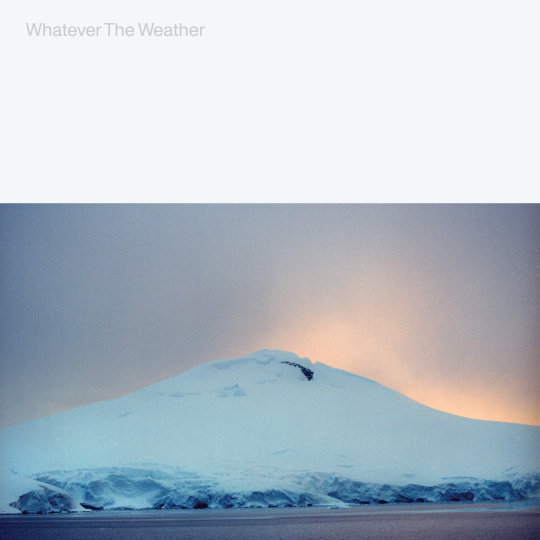
Whatever the Weather - Whatever the Weather (Ghostly International)
With albums like For You And I and Reflection, British producer Loraine James has proven to be one of the most exciting new IDM-adjacent artists of the past few years. In the spring of 2022, just in time with sudden shifts in temperature, James decided to debut her side project Whatever the Weather, emphasizing keyboard improvisation, vocal experimentation, and ambient textures over the club music she had mastered prior. Similar to the fickle nature of weather, the songs on Whatever the Weather--each titled to mirror a different literal temperature--abruptly change moods and approaches while reflecting on divergent influences. A lonely synth line and glacial techno beats comprise “0°C”, while “10°C” juxtaposes cold electric piano, layered on top of itself, with chirpy synths, almost like the sound of birds hatching after a long winter. “6°C” and “30°C” sport James’ clever emo inspiration, the twinkles on the former recalling cascading guitars on an American Football song, her vocals on the latter channeling the breathiness of Deftones’ Chino Moreno. And when the synths on “36°C” become wrapped in an overarching sense of melancholic summertime sadness, you can’t help but look back at the entirety of Whatever the Weather and remember that the outside world, like yourself, is ever-changing. -JM
#700 bliss#moor mother#bartees strange#beyonce#binker & moses#death cab for cutie#florist#immanuel wilkins#jeremiah chiu & marta sofia honer#kevin morby#lucrecia dalt#mary halvorson#matmos#the soft pink truth#muna#nilufer yanya#nina nastasia#nnamdi#oren ambarchi#quelle chris#rosalia#sarathy korwar#s.g. goodman#soul glo#special interest#sudan archives#sza#tanya tagaq#the wonder years#tomberlin
0 notes
Audio
"Cesca" by Village of the Sun, Simon Ratcliffe, Moses Boyd, Binker Golding https://ift.tt/U0Ti1lc
0 notes
Text
Binker and Moses, "Asynchronous Intervals"
0 notes
Photo

• binker & moses
• feeding the machine
• bit.ly/bRmS-fTm
0 notes
Text

"Mo Soul" Player Playlist 27 September
Barnaby Keen & Benjamim - All I Want
Village Of The Sun Feat. Binker and Moses - Village Of The Sun
Black Coffee Feat. Shekhinah - Your Eyes
Black Nile - Second Serving
Boozoo Bajou - Sign
Boulevards - Set The Tone
Brian Culbertson - The Hangout
Brother Groove - More
Buscemi - Sweeping The Floor (Buscemi Happy House Remix)
Calibro 35 - Piombo In Bocca
Cantoma Feat. Quinn Lamont Luke - Back Into Daylight
Christian Scott - Incarnation (Chief Adjuah - Idi Of The Xodokan)
Cleo Sol - ROse In The Dark
Copacetic - Collage
Cory Henry - Say Their Names
If you really want to enjoy music and help musicians and bands, buy their lp’s or cd’s and don’t download mp3 formats. There is nothing like good quality sound!!!
(Angel Lo Verde / Mo Soul)
#mo soul#playlist#music#soul#blues#funk#jazz#lounge#reggae#rock#fusion#house#r&b#afro funk#disco funk#acid jazz#nu jazz
11 notes
·
View notes
Text
youtube
Binker & Moses - Feeding The Machine
(2022, full album)
[Avant-Garde Jazz, Post-Bop, Spiritual Jazz]
1 note
·
View note
Text
The Valley of the Ultra Blacks | Binker and Moses
0 notes
Text

1 note
·
View note
Text
39. Binker & Moses | Feeding the Machine

🏴 Angleterre | Gearbox | 50 minutes | 6 morceaux
Le batteur Moses Boyd et le saxophoniste Binker Golding s’adjoignent les services d’un troisième larron, expert en effets électroniques, en la personne de Max Luthert. Ils basculent tous ensemble dans un processus créatif aussi spontané qu’avant-gardiste, les deux musiciens de jazz étant poussés dans leurs retranchements pour pouvoir « nourrir la machine » (des synthétiseurs modulaires pour l’essentiel). Enregistré en trois jours, ce disque témoigne de l’exceptionnelle vitalité du jazz actuel (et notamment de la scène londonienne).

youtube
0 notes
Link
Binker Golding - tenor saxophone
Moses Boyd - drums

* Live at Total Refreshment Centre (London, 25th July 2017)
5 notes
·
View notes
Text
Binker & Moses – Feeding the Machine
Binker & Moses – Feeding the Machine
UK, 2022, avant-garde jazz / post-bop
Cool, nuanced, spacious jazz that resists the urge to lose its shit (it very easily have done so, and I applaud these guys for their restraint). The first track is a pulsing beacon of music, demanding instant attention so that, when hints of droning electronics come in on the second and third track, the listener is ready and accepting. In some ways, there…
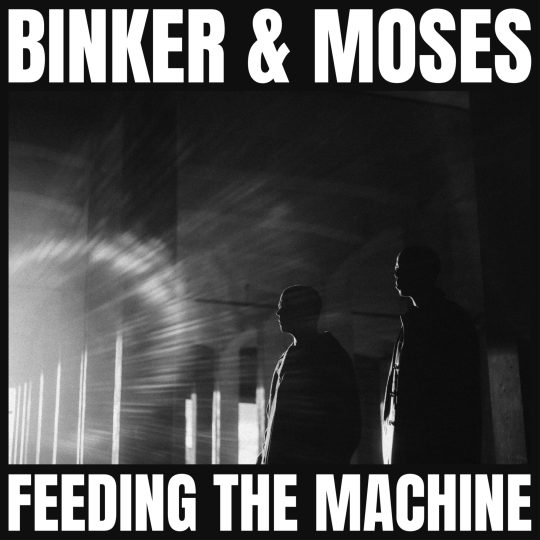
View On WordPress
0 notes
Text
Binker Golding Interview: Youth and the Wild

Photo by Carl Hyde
BY JORDAN MAINZER
“I’m just not that interested in fitting in.”
It’s a statement that certainly rings true for Binker Golding’s second solo album Dream Like A Dogwood Wild Boy, out Friday via Gearbox Records. Up until this point, you could pinpoint the tenor saxophonist, composer, and one half of excellent duo Binker & Moses as part of an ever-burgeoning British jazz scene, one that has seen the likes of Sons of Kemet, Nubya Garcia, and Zara McFarlane receive global reach and acclaim. Press play on Dream, however, and you hear an unfamiliar sound, at least for Golding: bluesy slide guitar, then drums, piano, and double bass, all before his saxophone enters. It sounds like the instrumental to a classic rock song, still embedded in a jazz tradition, but threatening to bridge the gap.
Sure, in a few years and probably many albums later, we’ll look back on Dream Like A Dogwood Wild Boy as Golding’s “heartland jazz Americana” record, one where influences of John Mellencamp and Skip James rubbed elbows with the current cream of the crop of UK jazz heavyweights like drummer Sam Jones, bassist Daniel Casimir, and pianist Sarah Tandy. The genre-hopping is certainly thrilling, on moments like Golding’s saxophone taking a lead vocal against Billy Adamson’s twangy guitar lines on “Love Me Like A Woman”, or the rock harmonies of guitar, piano, and saxophone on album closer “All Out Of Fairy Tales”. But the idea that Golding isn’t concerned with fitting in is especially illuminating when listening to the album, which was born out an intense period of self-reflection for Golding. He had lost both his biological father and stepfather. He was looking at the characteristics he had inherited from his dad, good and bad. He was looking at himself as a man. If jazz as a genre is one inherently collaborative and outward-looking and listening, Golding’s second album--though displaying mighty band chemistry--is a bit of a thematic outlier. It’s instrumental, but you can hear the way it communicates the contrasts between the expanse of the music and middle American landscapes and the inner depth of Golding’s thoughts.
I asked Golding some questions about Dream Like A Dogwood Wild Boy over email, including its influences, communicating lyrical themes instrumentally, and playing live. Read our conversation below.
Since I Left You: Why did you decide on a blues, heartland rock, Americana-influenced aesthetic for your second album?
Binker Golding: The music is just another part of who I am. It’s an honest reflection of how I felt at the time. I think people often think that you’re hopping genres or being influenced by something new that you’ve come across, but it just wasn’t the case for this record. The music was right there on the surface for me. I’ve always felt deeply attached to those styles, and over the course of my life, I’ve become them. I suppose it surprises people, given the current climate of British jazz, but I’m just not that interested in fitting in.
SILY: The first single and opening track "(Take Me To The) Wide Open Lows" opens with bluesy slide guitar riffing. Was it important for you to open with a specific sound so different from what you had presented before?
BG: Yes, I’d say so. It’s usually a good idea to make a big statement on the first track of a record, to draw the listener in and let them know what sort of world the album inhabits. In a way, the first track is an overture for the rest of the album. I felt “Wide Open Lows” was probably the most representative of the sound of the album, so it made it as the first track. I don’t think it would’ve worked anywhere else on the record. I wanted the guitar solo that opens the track to be unusually long. I wanted a sprawling track that was evocative of the sort of landscapes I was thinking of. I’m also against the contemporary idea that a piece of music has to get straight to the central part as quickly as possible. Intros are currently at their most short in the history of popular music. I think this is a travesty.
SILY: Like you've said, it's hard to explicitly explore concepts like masculinity, humanity, love, and sex on an instrumental album. At times, however, I feel like certain instruments--whether your saxophone or electric guitar or even drums--take the lead the way a vocal would. Did you notice that? Was that intentional?
BG: There was definitely a lyrical intention to the way I wrote the melodies and to the way I directed the band, in particular the soloists, Billy Adamson on guitar and Sarah Tandy on piano. The solos the three of us played were as free as ever, but we were deliberately trying to play the songs in a lyrical fashion. For most of the songs, I wanted people to hear them and say, “There should be words to this,” or, “I can hear lyrics to this.” I wanted to invite the listener into making up their own lyrics to the songs.
SILY: What's the inspiration behind the title "My Two Dads"?
BG: Literally, my biological father and my stepfather, both of whom died in 2020. I wasn’t looking to pay tribute to them in any way, and I don’t like to think of it as a tribute as such. I often write pieces and get halfway through and start to think to myself, “This is about this person,” or, “This is about this time,” etc. The piece is less about the memory of them and more about the feeling of the loss of them. I realized I had no more male father figures in my life, and there was a profundity to that. I also had three friends who were going through the exact same thing at the exact same time. All of them were males, and the loss of our fathers were a big talking point for us.
SILY: Were you at all inspired by British folk and folk-rock on this record?
BG: Not so much British folk, but certainly American and Canadian folk-rock. Mainly Neil Young, James Taylor, Joni Mitchell, [and] Tracy Chapman, and then hugely by heartland rock musicians, mainly Springsteen and John Mellencamp. I listen to a lot of old American folk music also. The Delta Blues artists like Skip James and Mississippi Fred McDowell are very important to me. I listen to a lot of the traditional Appalachian music also.
SILY: What's the inspiration behind the album title?
BG: Dogwood is a tiny town in Kentucky. It’s very remote. It’s somewhere I imagined I’d like to go to and just be alone, have no worries or cares, at least for a short time. Youth and the wild go hand in hand with that idea. I like instructional titles. If they’re good, they help the listener get into the music. I take great consideration over them.
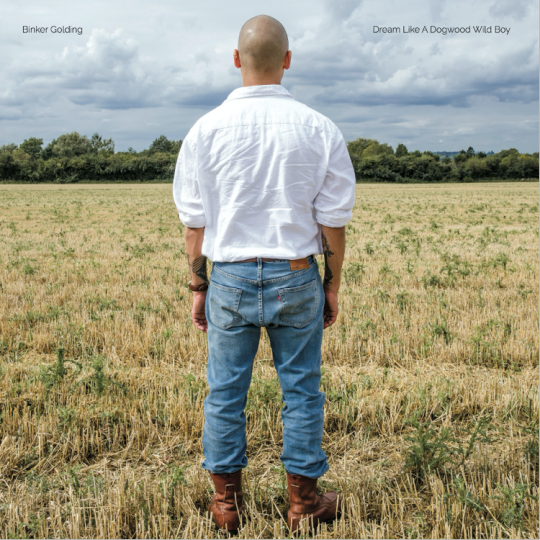
SILY: What's the story behind the album art?
BG: The album is another portrait of me in one way or another. My first album was, too, but this one was a bit more complex. The cover is very loosely based on the painting Wanderer above the Sea of Fog by Caspar David Friedrich. The important thing about the painting and cover of the album is the fact that the face is hidden, and as a result, you can’t tell what expression the subject has on. I wanted it to be ambiguous. The back cover is just a shot of my hands. The inside has pictures of my face, but the expression is completely blank, which is deliberate. I wanted the listener to decide what mood the album is based in, in a similar fashion to the Mona Lisa. The wanderer above the sea fog is slightly triumphant in the sense that it symbolizes the conquest of nature. Something has been won. I wanted the cover to be the opposite. I’m not on a mountain top. The ground is completely flat, and there’s no crop left. Instead, there are weeds growing where the crop once was. I didn’t want it to be negative, just subtle and ambiguous.
SILY: Are you playing this record live? If so, how are you adapting it to a performance?
BG: Yes, we’ve been playing it very faithfully live. It’s not too hard to adapt, minus some of the guitar parts. We play the songs in the exact order that they appear on the record. I don’t really think they work any other way. We also don’t play any of the songs from the previous album, as I don’t think they blend very well, except for “You, That Place, That Time”.
SILY: What's next for you?
BG: I’m currently writing a follow up to this album. When one’s done, I just start another one. I’ve not found a better way to live my life. I’m happy living like that.
SILY: Anything you've been listening to, watching, or reading lately that's inspired you?
BG: I seldom draw inspiration from external sources, which people often find odd to hear. I read regularly and watch films often, but as I say, they don’t often feed back into my work except for in a technical aspect. I suppose people that tell stories about people are ultimately the thing that’s inspired me most in the last 5 or so years. For example, the filmmaker Ingmar Bergman: I’d like to one day make an album that serves the same purpose as one of his films. I’m interested in telling stories about people through music.
youtube
#interviews#binker golding#dream like a dogwood wild boy#carl hyde#gearbox#gearbox records#binker & moses#sons of kemet#nubya garcia#zara mcfarlane#john mellencamp#skip james#sam jones#daniel casimir#sarah tandy#billy adamson#neil young#james taylor#joni mitchell#tracy chapman#bruce springsteen#mississippi fred mcdowell#wanderer above the sea of fog#caspar david friedrich#mona lisa#ingmar bergman
0 notes